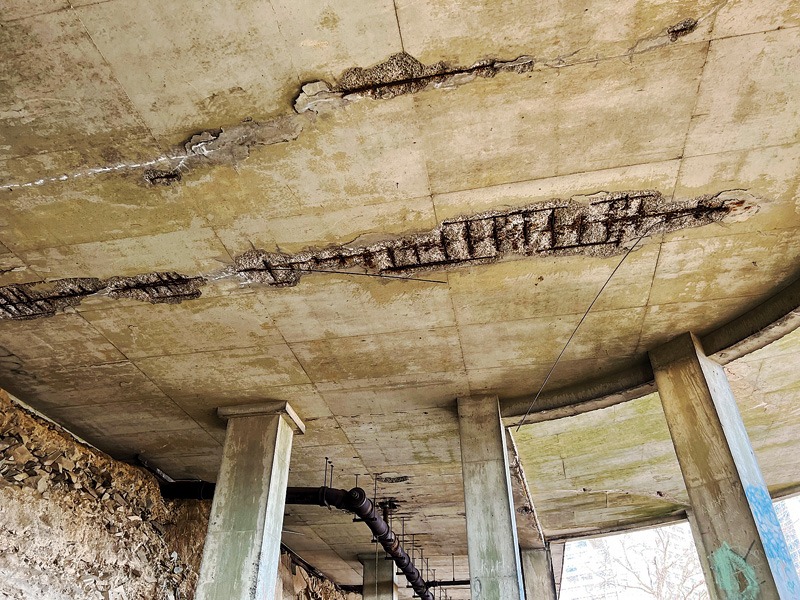All cracked up: Assessing and repairing deteriorated concrete

Deteriorated concrete is frequently encountered in existing structures and can result from several causes. Given the potential consequences associated with such conditions, it is necessary to understand the appropriate steps for assessing and remediating concrete exhibiting various types and degrees of deterioration.
One of the most common causes of concrete deterioration in older structures is the corrosion of embedded steel reinforcing bars due to exposure to moisture. Corrosion can be further promoted by the presence of chlorides at the depth of the embedded steel. Carbonation, the absorption of atmospheric CO2 into the concrete through water or air, can also diminish the concrete’s natural alkaline properties that protect embedded steel from corrosion and contribute to it.
Structures such as bridges and parking garages are especially vulnerable, as they are exposed to the elements and deicing salts (chlorides) during winter. Moisture and chlorides can migrate into the concrete through absorption, cracks, or failed or inadequate coatings or sealants, promoting the corrosion of the embedded steel. When corrosion occurs, it produces an expansive byproduct as the steel oxidizes. Confined by the surrounding concrete, this buildup of corrosion product exerts expansive forces against the concrete, leading to cracks, spalls, and delamination. This process further exposes the reinforcement to additional moisture and possibly chlorides, typically accelerating deterioration and potentially reducing the structural capacity due to the loss of cross-sectional area of the steel reinforcement.
In addition to corrosion of steel reinforcement, concrete deterioration can also result from less obvious causes such as alkali silica reaction (ASR), freeze-thaw distress, as well as design and construction issues (e.g. improper mix design, placement, or curing), or a combination of these factors.
Evaluation of deteriorated concrete requires the expertise of a structural engineer familiar with such conditions. Typically, a visual condition assessment, combined with mechanical sounding of the concrete, is conducted to determine the nature and extent of the deterioration. Concrete core samples are often removed for laboratory analysis to understand the deterioration mechanisms better. Laboratory analysis to determine compressive strength, determine depth of chloride and/or carbonation ingress, and petrographic studies of the concrete samples can be performed.
Once the mechanisms and extent of deterioration have been characterized, an appropriate repair strategy can be developed. Although repair methods may differ depending on the cause(s) of the deterioration, a common approach involves removing the deteriorated concrete, cleaning and protecting the exposed reinforcement with a corrosion-inhibiting coating, and patching with an appropriate repair material. Replacing or supplementing the reinforcement is required when corrosion has resulted in structurally detrimental section loss. In some instances, applying protective breathable coatings to exposed concrete surfaces may be recommended as part of the repair process to reduce future moisture, chloride, and/or carbonation ingress, thereby extending the life of the repairs and adjacent concrete. Further guidance on repairing concrete structures can be found in numerous publications by the American Concrete Institute (ACI) and the International Concrete Repair Institute (ICRI).
Author
Alexandar J. Mlynarczyk, PE, is an associate principal with the Princeton, N.J., office of Wiss, Janney, Elstner Associates (WJE) Inc., specializing in the investigation and repair of building structures. He can be reached at amlynarczyk@wje.com.
The opinions expressed in Failures are based on the authors’ experiences and do not necessarily reflect that of The Construction Specifier or CSI.



